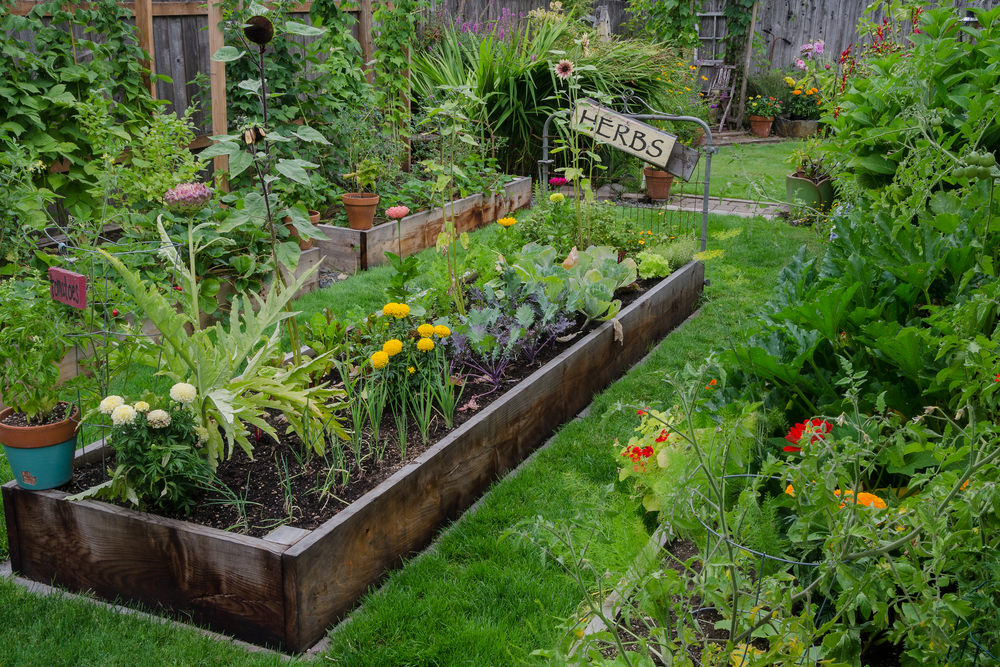How green is your garden?
Our gardens are one of the few spaces where we can get back to nature and do (almost) what we choose. When set up right, they can become an oasis for wildlife and people alike. If you’re lucky enough to have one, here’s how you can check whether you have an eco-friendly garden.
Do you have a hedge?
A huge number of small animals live in hedges—some birds, hedgehogs, insects and a whole lot more. Larger animals such as badgers use hedges for getting safely from one place to the next. On top of this, hedges stop soil from eroding by holding it together and acting as a wind break. They also keep noise levels down by blocking out some of the sound from passing traffic. So if you have a fence or a wall around your garden, consider replacing it with a hedge. And if you already have one, make sure to keep it litter-free and leave fallen leaves underneath it—they become animal homes!
Are you growing your own?
No matter how small your garden is, there’s bound to be some space for growing food somewhere. In our garden, we have strawberries, radishes, lettuce, beans and something bushy that we haven’t quite identified yet (we think it’s a vegetable, though—we’re waiting for it to grow a bit bigger.) Even if you have no ground space, you can plant some things, like tomatoes and strawberries, in pots or even hanging baskets to keep them out of the way. There are all sorts of imaginative ways for growing food in containers. Food from your own garden is healthier, more eco-friendly and, above all, much more fun than the shop-bought stuff. (Hint: picky kids are more likely to eat vegetables if they’ve watched them grow). Try to avoid pesticides wherever possible.
Have you gotten rid of the gravel and paving?
A patio for the table is one thing, a gravelled-over garden is quite another. Most animals need grass to live and eat in. Even those that don’t need grassy spaces. Birds, for example, often find their insect food on grassy spaces and would starve without them. So give as much of your garden as you can to wildlife. Grass is much more beautiful, anyway.
Are you composting?
Making your own composter is incredibly easy, and the benefits are enormous. So much waste can go into compost. Grass cuttings (mix them up with other things or it gets slimy), human hair clippings, vegetable peelings, leftover fruit and veg, chopped-up sticks, paper and cardboard, tea bags and coffee grounds—you can even pee on your compost if you’re so inclined, although this can make it a bit acidic. You end with wonderful, rich soil for your plants, the sort that you’d otherwise have to fork out a ton of money for at the garden centre.
Do birds feel at home?
Birds love to have bird baths and food provided for them. You needn’t go and buy anything fancy, an old baking tray or a large, shallow tray filled with clean water will do the trick. Bird food can be made with leftovers, unsalted nuts and seeds, old rice and pasta (our chickens loved this) and even fun things like peanuts threaded onto old string. Put the food and bath out of the reach of cats, and watch the birds having fun. I’m sure there are plenty more things you can do to make gardens more green—tell us in the comments about your eco-friendly garden and your ideas. We’d love to hear them!
Originally posted on my blog this whole wide world.
Images via shutterstock.com.
Bonus!
Listen to this Green Divas In The Garden podcast segment with Green Diva Ali for June gardening tips…

Pingback: How green is your garden? | This whole wide world